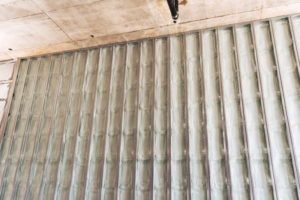Revolutionizing sustainability with HFO-blown spray foam

In Mirabel, Quebec, Groupe Sélection completed a modern residential apartment complex for active retirees, known as Liva Mirabel. The complex features 348 apartments of differing sizes, with numerous smart devices allowing residents to control the lighting and temperature of their dwellings with a simple touch screen. Groupe Sélection worked with YHS Architecte to create a beautiful, and more importantly, comfortable residence for those looking to enjoy their retirement. They wanted to achieve the ultimate building envelope to ensure a comfortable and eco-friendly living environment. They chose HFO-blown spray foam insulation to align with their environmental commitments and meet high energy efficiency targets. The project team utilized the insulation across the building envelope, including walls and roofs.
A key challenge the architects and general contractors were faced with was the climate. Mirabel, a suburb of Montreal located on the North Shore, is no stranger to cold, snow, and rain throughout the year, which can cause delays and failures to meet building codes at specific times during a project’s lifetime. Since traditional insulation methods need to be applied externally, forecasted rain and snow can delay installation for days at a time, incurring extra costs and complications. Therefore, the moisture barrier function of the HFO-blown spray foam insulation provided protection against potential condensation.
Conclusion
The journey to more sustainable building practices necessitates innovation and new technologies, especially in the domain of insulation materials. As evidenced, HFO-blown spray foam insulation has emerged as a highly effective solution, not only meeting but exceeding green building standards such as Leadership in Energy and Environmental Design (LEED) v4.
Its low GWP, superior insulating properties, and water damage mitigation capabilities make it an ideal choice for architects and building engineers. It also aligns perfectly with ambitious environmental initiatives, such as Canada’s net-zero emissions goals by 2050.
The future of green buildings depends on such innovative materials and technologies, which offer solutions that align with environmental responsibilities without compromising on performance. Therefore, it is incumbent upon architects and building engineers to leverage such advancements in their quest to build a greener, more sustainable future.
By adopting innovative materials such as HFO-blown spray foam insulation, professionals can ensure a greener future for the built environment—one that prioritizes sustainability, energy efficiency, and the well-being of its occupants. The future of green buildings is here, and it is high-performing, resilient, and sustainable.
Mickel Maalouf is a Leadership in Energy and Environmental Design (LEED) green associate and sustainable building science manager with Huntsman Building Solutions.



